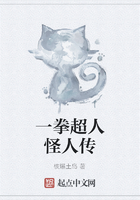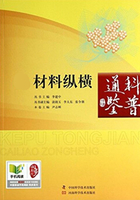It is difficult to determine how far the English kings succeeded in influencing appointments to Irish bishoprics. About Dublin, Meath, and Kildare there can be no doubt that their efforts were attended with success. In Armagh, too, they secured the appointment of Englishmen as a general rule, and in Cashel, Waterford, Limerick, and Cork their recommendations, or rather the recommendations of the Anglo-Irish nobles, were followed in many instances. Outside the sphere of English influence it does not seem that their suggestions were adopted at Rome. At any rate it is certain that if they sought for the exclusion of Irishmen their petitions produced little effect. During the early years of the reign of Henry VIII. more active measures seem to have been taken by the king to assert his claims to a voice in episcopal appointments. In the appointments at this period to Armagh, Dublin, Meath, Leighlin, Kilmore, Clogher, and Ross it is stated expressly in the papal Bulls that they were made /ad supplicationem regis/.[18]
Unfortunately several of the ecclesiastics on whom bishoprics were conferred in Ireland during the fifteenth century had but slender qualifications for such a high office. On the one hand it was impossible for Rome in many cases to have a close acquaintance with the various candidates, and on the other the influence of the English kings, of the Irish princes, and of the Anglo-Irish nobles was used to promote their own dependents without reference to the effects of such appointments on the progress of religion. The Archbishops of Dublin and Armagh, and the Bishops of Kildare and Meath were more interested as a rule in political and religious affairs than in their duties as spiritual rulers. They held on many occasions the highest offices in the state, and had little time to devote their attention to the government of their dioceses. Absenteeism was as remarkable a characteristic of the Church in the fifteenth century as it was of the Established Church in the eighteenth, and in this direction the bishops were the worst offenders. Very often, too, Sees were left vacant for years during which time the king's officials or the Irish princes, as the case might be, wasted the property of the diocese either with the connivance or against the wishes of the diocesan chapters. Of the archbishops of Ireland about the time of the Reformation, George Cromer, a royal chaplain, was appointed because he was likely to favour English designs in Ireland, and for that purpose was named Chancellor of Ireland; John Alen, another Englishman, was recommended by Cardinal Wolsey to Dublin mainly for the purpose of overthrowing the domination of the Earl of Kildare; Edmund Butler, the illegitimate son of Sir Piers Butler, owed his elevation to the See of Cashel to the influence of powerful patrons, and Thomas O'Mullaly of Tuam, a Franciscan friar, passed to his reward a few days before the meeting of the Parliament that was to acknowledge Royal Supremacy, to be succeeded by Christopher Bodkin, who allowed himself to be introduced into the See by the authority of Henry VIII. against the wishes of the Pope.
But, even though the bishops as a body had been as zealous as individuals amongst them undoubtedly were, they had no power to put down abuses. The patronage of Church livings, including rectories, vicarages, and chaplaincies enjoyed by laymen, as well as by chapters, monasteries, convents, hospitals, etc., made it impossible for a bishop to exercise control over the clergy of his diocese. Both Norman and Irish nobles were generous in their gifts to the Church, but whenever they granted endowments to a parish they insisted on getting in return the full rights of patronage. Thus, for example, the Earl of Kildare was recognised as the legal patron of close on forty rectories and vicarages situated in the dioceses of Dublin, Kildare, Meath, Limerick, and Cork, and he held, besides, the tithes of a vast number of parishes scattered over a great part of Leinster.[19] The Earl of Ormond enjoyed similar rights in Kilkenny and Tipperary, as did the Desmond family in the South, and the De Burgos in Connaught. The O'Neills,[20] O'Donnells, O'Connors, McCarthys, O'Byrnes, and a host of minor chieftains, exercised ecclesiastical patronage in their respective territories. Very often these noblemen in their desire to benefit some religious or charitable institution transferred to it the rights of patronage enjoyed by themselves. Thus the monastery of Old or Great Connal in Kildare controlled twenty-one rectories in Kildare, nineteen in Carlow, one in Meath and one in Tipperary,[21] while the celebrated convent of Grace-Dieu had many ecclesiastical livings in its gift.
Owing to these encroachments the bishop was obliged frequently to approve of the appointment of pastors who were in no way qualified for their position. The lay patrons nominated their own dependents and favourites, while both ecclesiastical and lay patrons were more anxious about securing the revenues than about the zeal and activity of the pastors and vicars. Once the system of papal reservation of minor benefices was established fully in the fifteenth century, the authority of the bishop in making appointments in his diocese became still more restricted. Ecclesiastics who sought preferment turned their eyes towards Rome. If they could not go there themselves, they employed a procurator to sue on their behalf, and armed with a papal document, they presented themselves before a bishop merely to demand canonical institution. Though, in theory, therefore, the bishop was supposed to be the chief pastor of a diocese, in practice he had very little voice in the nomination of his subordinates, and very little effective control over their qualifications or their conduct.















